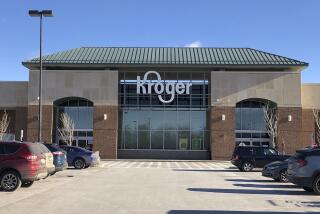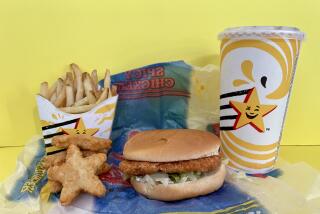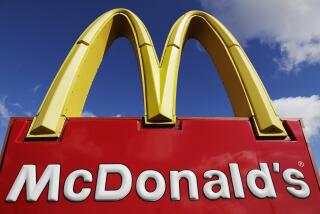Carl’s Discounts : Finally Joining the Competition, Chain Turns to Lower-Priced Fare
ANAHEIM — It’s no big secret that the Carl’s Jr. chain was slow to respond several years ago when fast-food customers began to clamor for better values.
Even as fast-food leader Taco Bell pushed its menu prices down, Anaheim-based Carl Karcher Enterprises continued to rely on the company’s longstanding reputation for high-quality food at somewhat higher prices.
That strategy hurt the fast-food company as customers began viewing Carl’s Jr. as a costlier alternative. But starting today, Carl’s Jr. will be shouting about value in a multimedia advertising campaign that will promote the 650-unit chain as offering good food that costs less.
The long-awaited campaign is drawing praise from food industry analysts.
“Unquestionably, Carl’s Jr. has to do this,” said Laurie Lively Smith, a restaurant industry analyst with Seidler Cos. in Los Angeles. “All they’re really doing is entering a level playing field with their competitors.”
Menu boards at the company’s restaurants have been changed to reflect the new emphasis on value. Some menu items--including the slower-selling “deluxe” hamburger--have been dropped. Prices are being cut on other items, including an “all you can eat” salad bar that moves to $2.49 from $3.49.
“What we’re doing is delivering to the fast-food customers what they’ve come to expect, which is value,” said Karen Eadon, Karcher Enterprises’ vice president of marketing. “We’ve always had an outstanding reputation for quality, but in the past few years, the value part of the equation got a little out of whack as competitors lowered prices and we didn’t keep up.”
Karcher Enterprises reported a $3.7 million profit on $460.4 million in revenue for its fiscal 1994, which ended Jan. 31. For the previous 12 months, the company had posted a loss of $5.5 million on revenue of $502.6 million.
The company completed a restructuring early in 1993 that slashed corporate overhead costs at the 650-unit chain. But the restructuring didn’t stop a three-year slide in same-store revenue--sales at units open for more than a year. That is an important measure of how fast-food companies do on a year-to-year basis.
The new menu and advertising campaigns are designed to reverse that slide in same-store revenue.
Karcher Enterprises President Donald E. Doyle said it will take time to show that the value menu is working.
“I don’t know exactly how long it will take to get to the break-even point,” Doyle said. “But the positive thing about being in the quick-service restaurant business is that you get immediate consumer response.”
Restaurant industry observers said Karcher Enterprises is taking a necessary step. “The worst thing they could do is ignore the problem,” Smith said.
“And they’ve realized that for a long time.”
More to Read
Inside the business of entertainment
The Wide Shot brings you news, analysis and insights on everything from streaming wars to production — and what it all means for the future.
You may occasionally receive promotional content from the Los Angeles Times.










